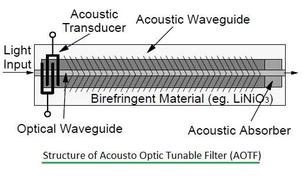Understanding OSNR (Optical Signal to Noise Ratio) in Fiber Optics
Advertisement
This page explains the basics of OSNR (Optical Signal to Noise Ratio) and mentions the OPS method used to measure it.
OSNR stands for Optical Signal to Noise Ratio. It’s a crucial parameter for estimating the performance of optical networks. It also helps in calculating the Bit Error Rate (BER) of an optical system.
OSNR Measurement: Linear Interpolation Method
According to the linear interpolation method, the following steps are involved in measuring OSNR:
- First, measure the total signal power within the passband channel.
- Next, measure the noise power, specifically the Amplified Spontaneous Emission (ASE) noise, in the gaps between optical channels. This measurement is typically taken over a 0.1 nm bandwidth.
- Finally, use the equation below to calculate the OSNR value.

Figure 1: OSNR measurement with signal of interest and undesired noise power on the left and right side of the wanted optical signal.
OSNR is expressed using the following equation:
OPS Method to Measure OSNR
OPS stands for Optical Polarization Splitting Method. It’s used to measure in-band OSNR. This technique utilizes optical polarization controlling and splitting.
Figure 2 below shows a block diagram of the OPS method used by JDSU.

Figure 2: Block diagram of the OPS method used by JDSU.
 RF
RF



